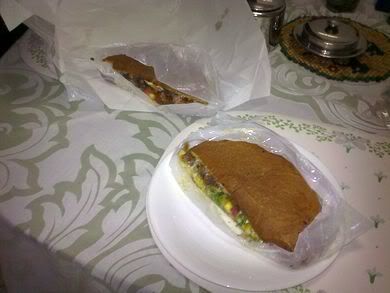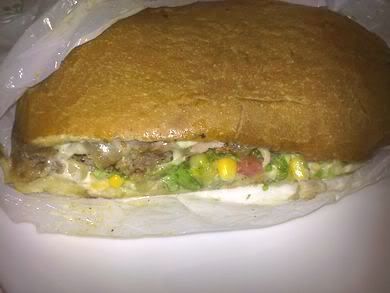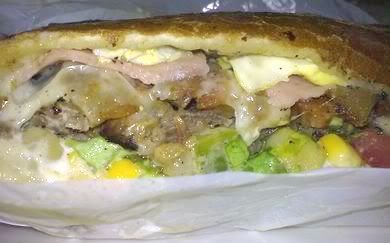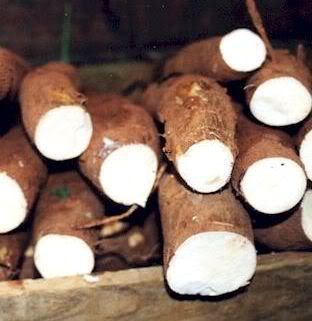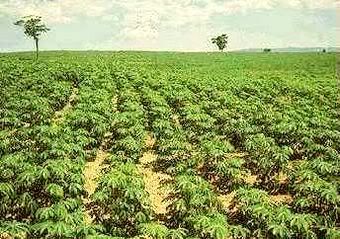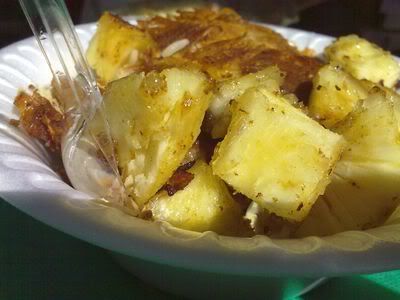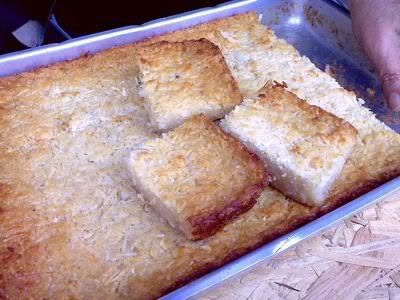Brazilian food is not exactly healthy. If you take for example some of the most popular dishes in the country - feijoada, acarajé, churrasco - they'll all present highly above-average levels of cholesterol/fat. Also, brazilian people tend to like extremely salty or sweet food (at least for international standards).
In the South, they have a typical hamburger wich they call "X-Gaúcho" or "Hamburguer Gaúcho". The "X" stands for "cheese", which is how this letter sounds like in portuguese. Thus, in Brazil, we have the "X-Salada", meaning a hamburguer with cheese and salad, and the "X-Tudo" (lit. X-Everything). The particularity of the Gaucho-burger is its size. The bread is almost as big as a regular dessert plate. It always comes split in halves, for it's almost impossible for one person to eat one of those alone. As for what comes inside, besides the hamburger meat you will find corn, green peas, cheese and mayonnaise, in its simpler version. There are lots of varieties. Near my house, they sell a really big one named "X-Campeiro" (Cheese Countryside). Curious about the stuffing?
- A Hamburguer
- 2 slices of cheese
- Some mayonnaise
- One fried egg
- A slice of ham
- Green peas
- Corn
- Minced bacon
- Minced Calabresa sausage
- Minced chicken hearts
- Tomatoes
- Chopped lettuce
I swear it is HUGE (and as delicious as it looks)! If you have heart problems, you'd better run away from it!
